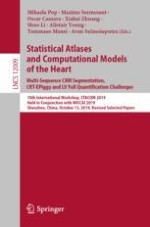2020 | OriginalPaper | Buchkapitel
Fully Automatic 3D Bi-Atria Segmentation from Late Gadolinium-Enhanced MRIs Using Double Convolutional Neural Networks
verfasst von : Zhaohan Xiong, Aaqel Nalar, Kevin Jamart, Martin K. Stiles, Vadim V. Fedorov, Jichao Zhao
Aktivieren Sie unsere intelligente Suche, um passende Fachinhalte oder Patente zu finden.
Wählen Sie Textabschnitte aus um mit Künstlicher Intelligenz passenden Patente zu finden. powered by
Markieren Sie Textabschnitte, um KI-gestützt weitere passende Inhalte zu finden. powered by
